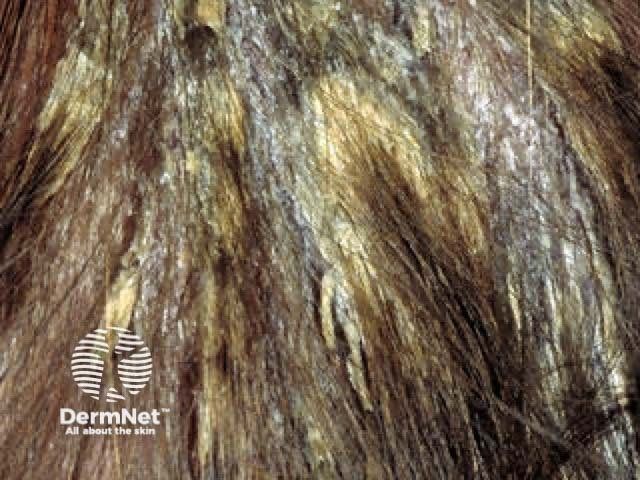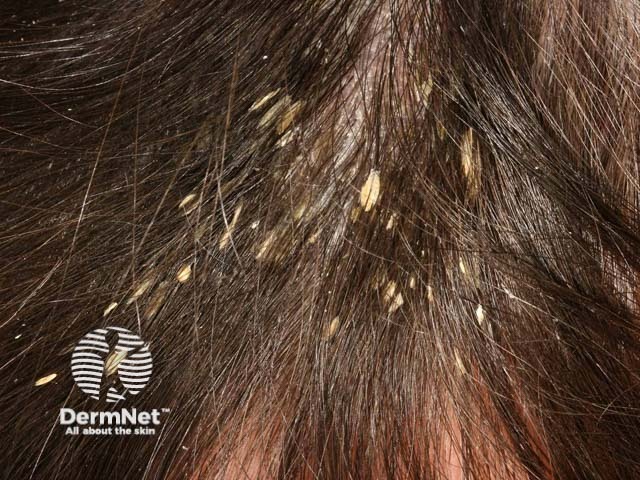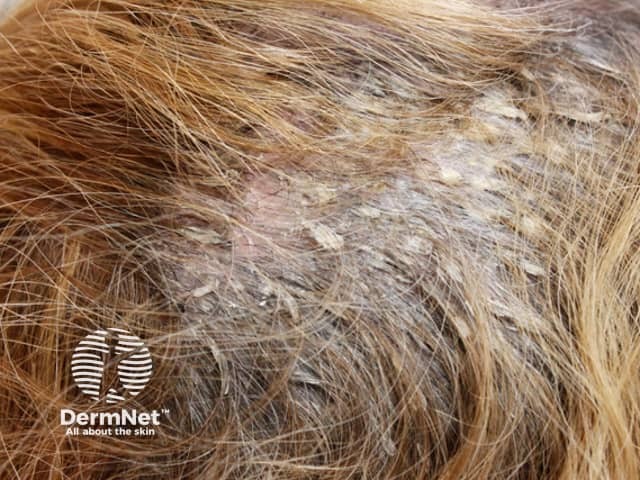Main menu
Common skin conditions

NEWS
Join DermNet PRO
Read more
Quick links
Author: Dr Nishan Amerasinghe, Dermatology Registrar, Hamilton, New Zealand, 2009.
Introduction Causes Clinical features Investigations Treatment
Pityriasis amiantacea is a condition in which there is excessive scaling of the scalp. Thick silvery or yellowish scales encircle the hair shafts and may bind down tufts of hair.
The scales may resemble asbestos, giving rise to the term amiantacea – the French word for asbestos is 'amiante'.

Pityriasis amiantacea

Pityriasis amiantacea

Pityriasis amiantacea
Pityriasis amiantacea is a reaction pattern rather than a specific diagnosis. Common conditions that may present with pityriasis amiantacea include:
Head lice and lichen simplex should also be considered.
When no underlying cause is found, the condition is often called idiopathic pityriasis amiantacea.
Pityriasis amiantacea more often affects females than males. It is generally seen in children and young adults.
It is characterised by thick scales wrapping around and binding down tufts of hair. The scaling may be localised or generalised depending on the underlying condition and its duration.
It may be complicated by secondary staphylococccal infection (impetiginisation), when the skin becomes sticky, oozy and crusted. Temporary or permanent hair loss (alopecia) may also occur.
If the underlying skin condition is not clear, the entire skin should be examined to uncover the cause of pityriasis amiantacea. This enables targeted therapy against the specific disease and prevents long term complications such as permanently bald areas.
Identifying the cause of pityriasis amiantacea |
|
|---|---|
Skin condition |
Description |
|
|
Seborrhoeic dermatitis |
|
Atopic dermatitis |
|
Tinea capitis |
|
Head lice |
|
Lichen simplex |
|
Skin and hair samples for mycology and bacterial culture may be useful.
Skin biopsy is rarely necessary.
Treatment depends on the specific underlying disease.
Idiopathic pityriasis amiantacea often clears completely with treatment and does not recur. Tinea capitis may be cured by appropriate antifungal treatments. However, pityriasis amiantacea or less severe scalp scaling tends to persist or reappear when it is due to a chronic skin condition such as psoriasis or seborrhoeic dermatitis.